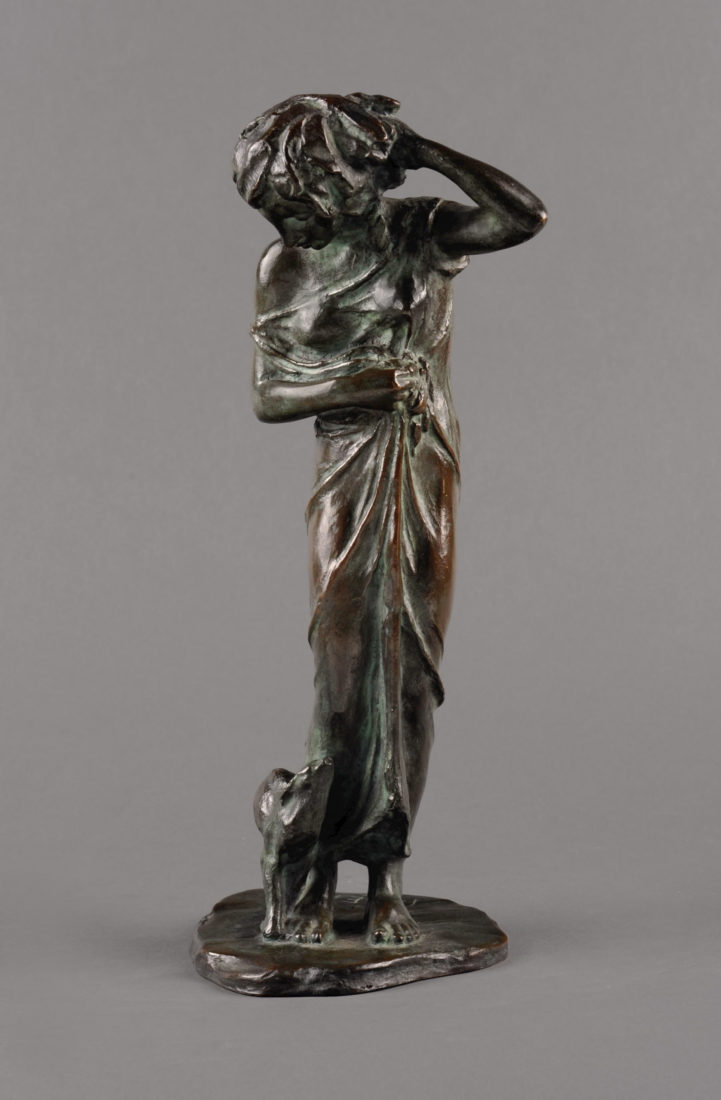An Iowa native, Eberle moved to Puerto-Rico in 1898 and set up a studio, using the locals as models for her studies of everyday life. She then moved to New York the following year to study at the Art Students’ League, where she successfully won scholarships and prizes. From 1904-1906, she shared an apartment with Anna Hyatt and the two collaborated on several works—Hyatt modeling the animals and Eberle the figures.
In 1906 Eberle was admitted into several professional organizations, exhibited at the Pennsylvania Academy of the Fine Arts and the National Academy of Design. Her sculpture Roller Skating, which would define her choice of subject matter and aesthetic philosophy for the remainder of her career, was purchased by the Metropolitan Museum of Art. Much of her work is similarly aligned to the Ash Can School.
By 1914, Eberle had moved from a comfortable apartment near Washington Square Park to a studio on Madison Street on the Lower East Side. This gave her access to the subject matter with which she identified—the children and inhabitants of the tenements in that area—and allowed her to be a more authentic sculptor.
Unfortunately, Eberle health had never been strong and by 1917 she was forced to leave the Lower East Side. After 1920, Eberle exhibited infrequently and produced very little sculpture, except for commissioned portraits.






